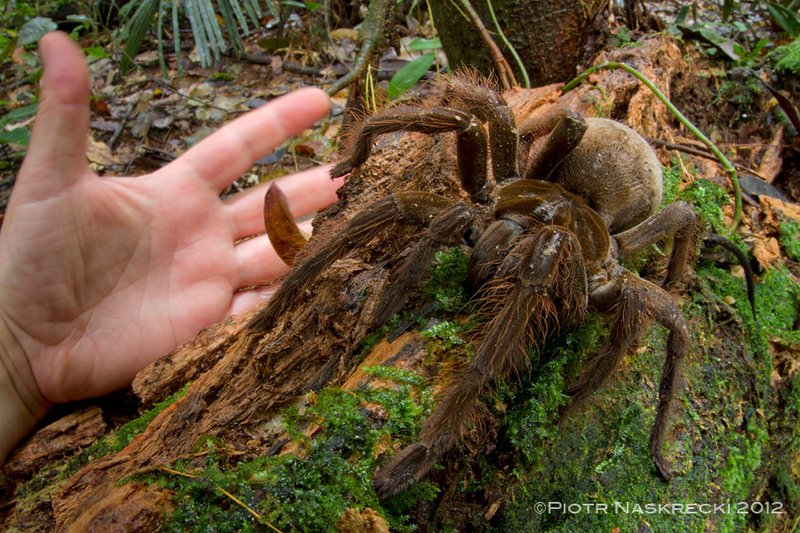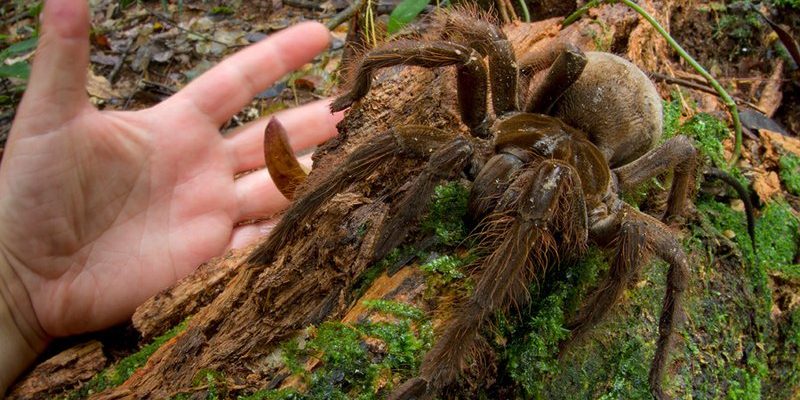
The Goliath birdeater, scientifically known as *Theraphosa blondi*, hails from the rainforests of South America. It’s one of the largest spiders on Earth, often captivating the curiosity of those who hear about it. But beyond the impressive size, many wonder what this spider is really like. Are they lurking behind bushes waiting to pounce, or are they more interested in hiding than hunting? Let’s explore what makes the Goliath birdeater tick.
Understanding the Goliath Birdeater’s Nature
The Goliath birdeater is a fascinating creature, but understanding its behavior is key to answering whether it’s dangerous or aggressive. To start, these spiders are generally known for their *docile nature*. Unlike many other spiders, they don’t actively seek out confrontation. It’s more about their survival instincts. When threatened, they usually prefer to scuttle away rather than engage.
You might be wondering why they’re called birdeaters. Do they really munch on birds? Well, the name comes from a few rare instances where they’ve been observed taking down small birds. However, their diet mainly consists of insects, frogs, and small mammals. So, while they can technically eat birds, it’s not a regular part of their menu. Think of them more as opportunistic feeders than relentless hunters.
Another notable aspect is their habitat. Goliath birdeaters prefer to stay on the ground rather than weaving webs high in trees, which is typical for many spiders. They burrow in the forest floor or hide under leaf litter, blending into their surroundings. This behavior often allows them to avoid potential threats, reinforcing their peaceful demeanor.
The Goliath Birdeater’s Defense Mechanisms
Despite their imposing size, Goliath birdeaters have evolved some clever ways to defend themselves. Instead of relying on venom to subdue their prey, they wield a different kind of weapon: urticating hairs. These tiny, barbed hairs can be flicked at a potential threat, causing irritation.
You might think, “How effective can that be?” Well, it’s quite uncomfortable for any predator, including humans. If you accidentally touch these hairs, you might feel itching or a burning sensation on your skin. It’s their way of saying, “Back off!” This defensive strategy is often enough to deter most animals.
What’s more, their size is a natural defense. Many animals shy away from something that looks bigger than they are. In the wild, few animals dare to attack a Goliath birdeater. They’re often left alone, allowing them to go about their business without the need for aggression.
Are Goliath Birdeaters Aggressive Towards Humans?
The short answer is: not really. Goliath birdeaters are not inherently aggressive towards humans. In fact, they’re more likely to retreat than attack. However, like any wild animal, they can become defensive if they feel cornered or threatened.
If you happen to encounter one, it’s best to admire from a distance. Trying to touch or handle a Goliath birdeater can provoke an unexpected reaction. They might bite, but their bites are rarely serious. The venom isn’t potent enough to pose a significant threat to humans—it’s more like a bee sting. Still, remember that a bite can be painful and might cause swelling.
If you find yourself in a situation where you interact with a Goliath birdeater, stay calm and back away slowly. They appreciate your space just as much as you appreciate theirs. Keeping that in mind can help avoid any potential misunderstandings.
Health Risks Associated with Goliath Birdeater Bites
While Goliath birdeaters aren’t looking to cause harm, it’s still wise to know about the potential effects of their bites. As mentioned earlier, their venom isn’t life-threatening to humans. Most often, a bite will lead to symptoms such as redness, swelling, and pain at the bite site. For most people, this resolves without medical attention.
However, some individuals might have a different experience. If you’re allergic to insect bites or have sensitive skin, you could have a stronger reaction to a Goliath birdeater bite. It’s always a good idea to watch for signs of an allergic reaction, like hives or difficulty breathing.
If you do get bitten, washing the area with soap and water can help prevent infection. Applying a cold pack can reduce swelling. If pain persists or the bite area becomes increasingly red or swollen, seek medical advice. It’s better to be safe than sorry when it comes to any unexpected medical issues.
Habitat and Conservation Status
Goliath birdeaters inhabit the lush rainforests of countries like Brazil and Venezuela. Unfortunately, their habitats are threatened by deforestation and habitat loss. Many people love to capture these spiders for the exotic pet trade, which poses another danger to their populations.
Conservation groups are working to protect their habitats as part of larger rainforest preservation efforts. By saving the forest, they save not just the Goliath birdeater but countless other species as well. It’s a reminder that every creature, no matter how big or small, plays a role in the ecosystem.
If you’re passionate about wildlife conservation, consider supporting organizations focused on rainforest preservation. Every bit helps ensure that these magnificent spiders continue to thrive in their natural habitats.
So, is the Goliath birdeater dangerous or aggressive? The answer is a resounding no, at least not in the way many might think. These fascinating spiders are more about peace than peril. They may look intimidating, but they prefer to avoid conflict whenever possible.
Understanding their behavior can help demystify the Goliath birdeater. They’re a vital part of the ecosystem, and with their unique defense mechanisms, they show that not all creatures are out to get you. If you’re ever lucky enough to see one, remember to keep your distance and admire from afar. In the end, they’re more of a marvel than a monster—just like the wonders of nature itself.

